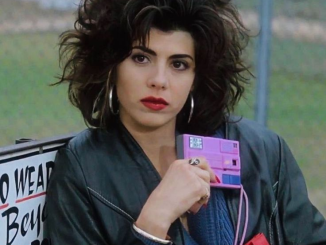
It’s crucial now more than ever to keep an eye out for dogs left in hot automobiles because summer is still going strong and temperatures are rising to record levels in many places.
Dogs who are left in hot cars will not survive for long due to their severe susceptibility to heat stroke. Accidents can still occur even if you believe you have done all the necessary safety measures to avert catastrophe.
That was the unfortunate situation that occurred recently when a police department K9 was left in a hot car without air conditioning and without emergency procedures in place, leading to his death.
Vader, a 4-year-old K9 with the Arnold Police agency in Missouri, passed away on July 31 from heat exhaustion, according to a press release from the agency.
Vader was left in a running patrol car with the air conditioner running, according to the department, which referred to this as a “necessary and common practice” for K9s who are not actively participating in police operations.
Officers found that the air conditioning system had broken down when they got back inside the car.
The police added that although all of their K9 patrol cars have a failsafe mechanism that sounds the horn, pulls down the windows, warns the handler, and triggers the alarms and sirens if the vehicle reaches a particular temperature, this emergency backup “failed to activate.”
After being taken to the veterinary facility in a hurry, Vader appeared to be improving, but he eventually passed away.
The Arnold Police Department posted, “Unfortunately, we learned last night that there were no further treatments available for Vader and he succumbed to his injuries.”
“Investigating this tragedy to determine what went wrong,” the department wrote in a letter. They also requested that people remember Vader’s handler and his family in their prayers and expressed their sorrow over his passing.
Understandably, the public has been devastated by the news and has experienced strong emotions; many have wondered if more might have been done to avert this disaster.
On Facebook, someone said, “Take the dog with you, just like a child. Common practice needs to change.”
For that reason alone, another person remarked, “These dogs should never be left in a car for an extended period of time, running or not.” “I know it was an accident, but nobody else should have to go through this.”
Others recommended enhancing or testing the emergency heat alarm system of the cars more frequently because it did not sound.
Vader is sadly not the only police dog to pass away after being left in a hot car; sadly, this happens frequently due to either officer negligence or—in this case—a malfunctioning air conditioner and backup system.
Horus, a second Missouri police dog, also passed away after being left in a hot car overnight, a few days before Vader did.
It is terrible that police dogs could suffer and even perish from a hot car since they put their lives in danger for their communities. Although emergency warnings and air conditioning are features of patrol cars, it is obvious that these devices are not infallible.
We hope that Vader’s untimely passing and the deaths of all the other K9 victims will spur more measures to safeguard their lives.
Woman Uses Face Cream Mom-in-Law Gave Her, Faints after Looking in Mirror the Next Morning – Story of the Day

Pauline’s birthday took an unexpected turn when she applied a new cream gifted by her estranged mother-in-law, Annalise. But she never imagined that she would be staring at the mirror in horror the next morning. What had Annalise done?
The aroma of freshly baked cake wafted through Pauline’s modestly decorated living room.
Streamers hung from the ceiling, and a small pile of gifts adorned the coffee table.
Pauline, a woman in her early thirties, with warm brown eyes and a hesitant smile, sat on the couch, surrounded by her immediate family.

For illustration purposes only | Source: Midjourney
Her husband, Carl, a tall man with kind features, handed her a gift. “This one’s from Mom,” he said, his voice tinged with surprise.
Pauline’s eyes widened as she accepted the package. She glanced at Annalise, her mother-in-law, who sat stiffly in an armchair across the room.
The older woman’s face was neutral, but her eyes betrayed a hint of nervousness.
“Thank you,” Pauline said softly, carefully unwrapping the gift.

For illustration purposes only | Source: Pexels
Inside was an expensive skincare set from a well-known brand.
Pauline’s surprise was evident as she examined the products. “Oh, wow. I love this brand,” she exclaimed, looking up at her mother-in-law. “Thank you, Annalise. This is very thoughtful.”
Annalise nodded curtly. “I read that women like these things nowadays. I ordered it online.”
Despite the kind and seemingly normal exchange, everyone in the room could sense the tension.

For illustration purposes only | Source: Pexels
For years, Pauline and Annalise had been at odds, to put it nicely. They had vastly different personalities, and the older woman wasn’t keen on boundaries.
It wasn’t until Carl threatened to cut contact that Annalise became more reserved and did not cause so many conflicts with Pauline.
Therefore, this gesture, however small, felt like a tentative step towards reconciliation.
As the party wound down and guests left, Pauline found herself in the bathroom, examining the skincare products.

For illustration purposes only | Source: Pexels
Carl joined her, wrapping an arm around her waist.
“I’m shocked that your mother bought me something,” Pauline said, unscrewing the lid of one of the creams.
Carl nodded with a hopeful smile on his face. “I’m just as surprised. But this could be good for all of us, right?”
Pauline agreed, applying the cream to her face. “These things are expensive. I can’t wait to see how my skin looks in the morning.”
But as they settled into bed that night, neither could have expected what happened the following morning.

For illustration purposes only | Source: Pexels
***
Pauline stirred awake and felt the soft morning light filtering through the curtains. However, it wasn’t pleasant as always. Something felt off.
Her face burned, and her eyelids felt heavy and crusty. Blinking slowly, she tried to focus on her surroundings.
“Ouch,” she mumbled, reaching for her face. The moment her fingers touched her skin, a searing pain shot through her. “Oh God!”

For illustration purposes only | Source: Midjourney
She bolted upright, ignoring the way her skin seemed to pull and crack with every movement. Stumbling to the bathroom mirror, Pauline let out a strangled gasp at her reflection.
Her face was a mess of angry red patches and peeling skin. Some areas looked raw as if the top layer had been completely stripped away.
“Carl!” she cried out, her voice trembling with fear and pain.
Her husband rushed to her side, his face paling at the sight. “Jesus, Pauline! What happened?”

For illustration purposes only | Source: Pexels
Before she could respond, Pauline’s vision blurred, and she felt herself falling. The last thing she heard was Carl’s panicked shout as darkness enveloped her.
When Pauline regained consciousness, she found herself in a white, sterile hospital room. The steady beep of monitors filled the air, and the smell of antiseptic stung her nostrils.
Carl sat beside her, his face etched with worry. “Pauline, baby. How are you feeling?” he asked, squeezing her hand gently.

For illustration purposes only | Source: Unsplash
Before she could respond, a doctor entered the room. “Mrs. Patterson, I’m Dr. Rawlings,” she introduced herself with a professional but kind tone. “Can you tell me what happened?”
Pauline recounted using the skincare products she had received as a gift. As she spoke, realization dawned on her face. “The cream… it must have been the cream,” she whispered, gaping at her husband.
Dr. Rawlings nodded gravely. “The cream you used was a professional-grade chemical peel, not meant for home use. It’s typically only used in medical spas under strict supervision.”

For illustration purposes only | Source: Unsplash
Pauline’s mind raced as she considered what the doctor said. After a few seconds, she connected the dots.
“Annalise,” she breathed, turning again to Carl with wide, horrified eyes. “Your mother did this on purpose!”
Carl’s face hardened as he started shaking his head. “I can’t believe she would go this far,” he muttered, frowning.
As if summoned by their words, Annalise burst into the room, and her face was full of concern. “Carl! Your sister called me with the news. Pauline, what happened?“

For illustration purposes only | Source: Pexels
Pauline’s reaction was immediate and visceral. “You did this!” she screamed as tears streamed down her damaged face. “YOU HORRIBLE WOMAN! YOU RUINED MY FACE ON PURPOSE!”
Annalise recoiled. “What? No! I didn’t! I swear!” she said, hurt, and placed a hand on her chest. “I… I saw the products online, and they had good reviews… I didn’t know they were so strong…”
Carl stood up, and anyone could see the rigidness of his body. He was trying to hold back his anger. “Mom, you need to leave. Now. We don’t want anything to do with you anymore.”

For illustration purposes only | Source: Pexels
Annalise tried to protest, but several nurses came in to usher her out of the room. When she was gone, Pauline collapsed into sobs, overwhelmed by the idea that her mother-in-law could cause her such harm.
***
Hours passed in a blur of doctors, nurses, and worried family members.
Pauline drifted in and out of sleep thanks to the pain medication which had dulled her senses. When she awoke again, she found Carl speaking quietly with Dr. Rawlings near the door.

For illustration purposes only | Source: Midjourney
“Carl?” she called out weakly.
He was by her side in an instant, relieved. “Hey, how are you feeling?”
“Like my face is on fire,” Pauline replied, attempting a smile. “What’s going on?”
Carl took a deep breath, seeming to brace himself. “Mom… she’s been trying to explain something.”

For illustration purposes only | Source: Pexels
Pauline felt her heart rate increase, and the monitor beside her began to beat faster. “What could she possibly have to say?”
“She said she didn’t do this on purpose,” Carl began cautiously. “She says she’s been seeing a therapist, trying to work on herself and our family relationship.”
Pauline’s brow furrowed, wincing at the pull of her damaged skin. “A therapist? Your mother?“

For illustration purposes only | Source: Midjourney
Carl nodded, looking as surprised as Pauline felt. “I know, it’s hard to believe. But she showed me some receipts, and her therapist even called to confirm.”
As Carl explained further, Pauline’s anger began to give way to confusion and a glimmer of something else… hope?
“She told me that she saw the products online, recommended by some influencer,” Carl continued, rolling his eyes at the idea. “She didn’t know it was professional-grade. She was just trying to get you something nice.”

For illustration purposes only | Source: Pexels
Pauline closed her eyes, processing this information. Could it be true? After years of hostility, could Annalise truly be trying to make amends?
“I think… I think I’d like to talk to her,” Pauline said finally, although she was still in disbelief.
When Annalise entered the room, her usual composed demeanor was nowhere to be seen. Her eyes were red-rimmed, and her hands twisted nervously in front of her.

For illustration purposes only | Source: Pexels
“Pauline, I… I’m so sorry,” Annalise began, her voice almost breaking. “I never meant for this to happen. I’ve been trying so hard to be better, to fix things between us. I know I haven’t been the best or easiest mom-in-law…”
As Annalise spoke, pouring out her heart about her therapy sessions and her genuine desire to be a part of their family without their previous animosity, Pauline felt something shift within her.
The anger and resentment that had built up over the years began to disappear. She always felt inclined to believe people who truly wanted to change.

For illustration purposes only | Source: Midjourney
Pauline was big on second chances, but it was still difficult.
“I want to believe you,” she said softly. “I want us to move past this. For Carl, for the kids… for all of us.”
Annalise’s eyes filled with tears. “You have no idea how much that means to me. I promise I’ll do whatever it takes to make this right.”
While they talked, Carl brought in the skincare products for the doctors to examine.

For illustration purposes only | Source: Pexels
It was confirmed that while the products were indeed professional-grade, they were readily available online without proper warnings.
“I’m afraid, Mrs. Patterson, that you should’ve been more careful with the instructions here,” Dr. Rawlings said carefully. “This chemical peel says it’s strong and can’t be used for over five minutes.”
“So, it’s my fault?” Pauline asked, shocked. Carl held her hand in comfort, and Annalise shook her head.
“No, it’s an easy mistake, unfortunately,” the doctor continued. “But it was dangerous.”

For illustration purposes only | Source: Unsplash
After the doctor left, Pauline laughed awkwardly, and the sound broke the tension. She and Carl apologized to Annalise for immediately jumping to conclusions, but the older woman understood why.
“After how I behaved before, I understand,” Annalise said and smiled at Pauline through teary eyes. It was a genuine grin that only proved how sincere she was.
So, in that hospital room, a new chapter began for their family.

For illustration purposes only | Source: Midjourney
Pauline reached out, taking Annalise’s hand in hers. “Let’s start over,” she said, smiling back. “Clean slate. Just… maybe hold off on any more gifts for a while, okay?”
Annalise let out a tearful laugh, nodding vigorously. “Deal.”




Leave a Reply